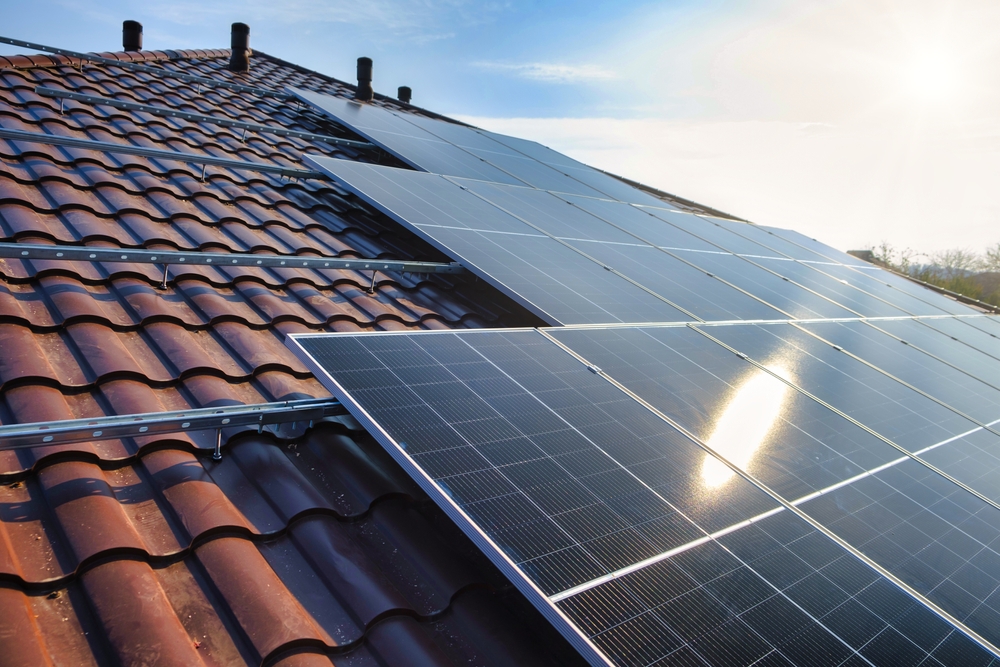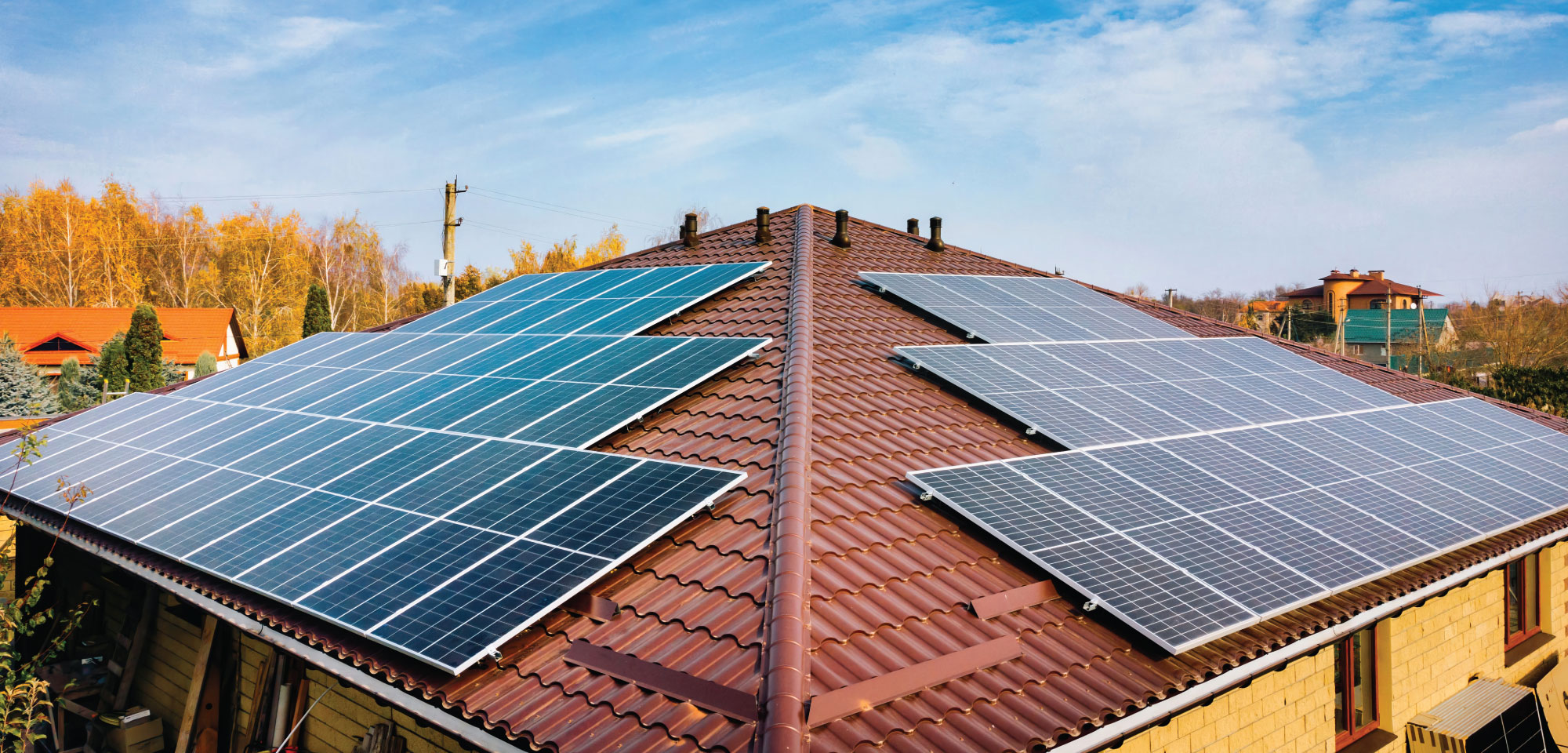Updated 3 months ago
How Solar Is Installed on Clay Tile Roofs
Written by Dan Hahn Dan HahnDan is a solar journalist and content advisor with SolarReviews. He also works with solar installers and solar nonprofits to develop and execute strat...Learn more , Edited by Zeeshan Hyder Zeeshan HyderZeeshan is a solar journalist who has long been passionate about climate issues and developed a deep interest in solar power after witnessing its succ...Learn more

Why you can trust SolarReviews
SolarReviews is the leading American website for solar panel reviews and solar panel installation companies. Our industry experts have a combined three decades of solar experience and maintain editorial independence for their reviews. No company can pay to alter the reviews or review scores shown on our site. Learn more about SolarReviews and how we make money.
Clay tile roofs dominate the landscape across the American southwest. They look great, are part of Spanish culture, and can last a century. However, they can be a pain in the butt for solar installers to work with.
Until recently, installing solar on clay-tiled roofs has been a more expensive and risky endeavor than other roof types, like composite shingle or metal. This is because tiles are relatively expensive, fragile, and removing them to install roof mounts for solar panels can open up the seal of your roof to water damage.
The old way of doing things:
Replacing small sections of tile with composite shingles, installing mounts meant for composite shingle roofs, and placing dummy tiles over the holes.
Cutting or drilling into tiles to attach hooks under them that support solar racks.
The new, better way:
Double-flashed tile replacements that perfectly fit in place of a single tile.
By no means should you let the challenges of installing solar on a tile roof dissuade you from going solar if you have a clay tile roof. In this article, we’ll review the best installation practices and equipment for clay tile roofs and highlight some considerations when working with your solar installer to upgrade your tile roof home with solar energy.
Key takeaways
Installations on roof tiles are more labor intensive, which drives up costs.
Avoid “comp-outs” and tile cutting, which can lead to roof leakages.
Protect your tiles by using a double flashing method instead of hooks.
Tile replacement mounts allow for an easier installation.
Installing solar on clay tile will be more expensive
Roof tiles are brittle. Any time someone needs to go up on one of these roofs to get some work done there’s a good chance a few tiles will break. Fitting the right kind of tile back in place of a broken tile isn’t always a quick process, and some tiles can be quite expensive to source.
For these reasons, most solar installers will be a lot more careful when working on a clay tile roof. However, that means they will be slower, and that means you’ll have to spend a little more for labor hours.
Try to avoid “comp-outs” or tile cutting

Some solar installers like to use a technique called a “comp-out” to more easily install solar on clay tile roofs. This technique involves removing all the clay tiles under the area where your solar panels will go, installing composite shingles in this area, and then plopping in traditional solar roof mounts, rails, and panels in that location.
Solar installers will then go ahead and place similarly shaped tiles in between the rows of panels in your array to make things look all tidy again.
Alternatively, some installers attach solar racks to your tile roof by taking out individual tiles and cutting or drilling small holes in them. This allows them to punch the solar mounts through and bolt directly to the wood sheathing underneath the tile.
Going these routes can create some problems since there will be a slight gap between where the tiles used to be and where your solar panels now are. Even though your new shingles protect your roof in the area they were installed in the case of a comp-out, water will still run off of them and sneak below your tile on the lower part of your roof. Further, small holes in your roofing tiles are not ideal for leakage either.
We all know water underneath your roofing material is a bad situation, it can be particularly worse if you live in a location that regularly gets below freezing, as trapped water converting to ice and back again can wreak havoc on your structure. For these reasons, we recommend against these two installation methods for clay tile roofs.
What is the best way to install solar on a tile roof?
Clay tile roofs
For clay tile roofs, it’s recommended to use a double flashing method instead of using hooks. That’s because the panels and hooks they’re attached to can rattle a bit in the wind and crack the more fragile clay tile.
A relatively new innovation, tile replacement mounts, makes solar installs easier by reducing your installer’s need to creatively cut tile to fit around hooks. They take the place of the tile under your solar installation where your mounts are attached to your roof!
Concrete tile roofs
For concrete tiles, a solid solar installer will temporarily remove just a few tiles just where special hooks need to be installed into your roof joists. Then, they will install base plates onto your roof membrane, and attach special hooks to them.
Flashing is installed next, preferably with tar, on top of the hook to ensure no water gets into this newly drilled area used to fasten the baseplate and hook (see the image above). Rails are then attached to each hook and your solar panels are mounted to them.
If a baseplate and hook needs to be installed in an area with no accessible roof joist underneath, your installer will need to cut some wood and install it in your attic in the appropriate areas.
Is installing solar on a clay tile roof worth it?
Solar panel installations on clay roofs are trickier to perform than on other roof types, making them more expensive.
However, they may still be worth a look if:
You live in a solar-friendly location
Your potential savings outweigh the upfront costs
You’re willing to pay extra for your energy independence.
See how much you can save with a solar installation on your clay roof using the calculator.
Dan is a solar journalist and content advisor with SolarReviews. He also works with solar installers and solar nonprofits to develop and execute strategic plans. Dan Hahn founded residential solar energy information and policy resource, Solar Power Rocks, in 2007. As the site's chief architect and senior editor, he developed a national framework for evaluating the impact of residential solar energy policy. Possessed with a mission to communicat...
Learn more about Dan Hahn